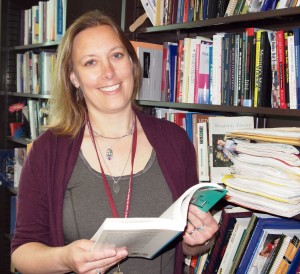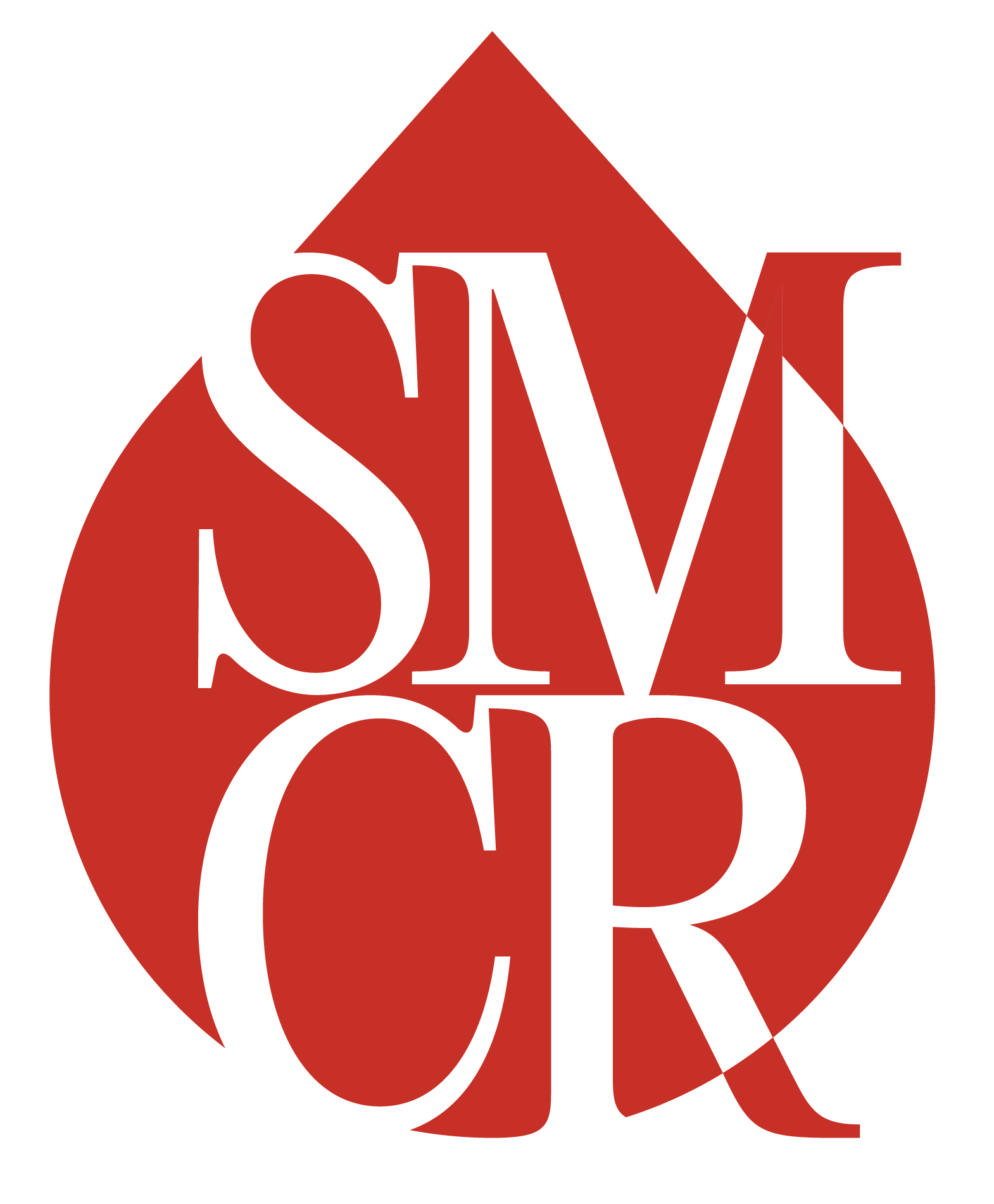Heather Dillaway, PhD, Professor of Sociology and Associate Dean, College of Liberal Arts & Sciences, Wayne State University
 When and why did you join the Society for Menstrual Cycle Research?
When and why did you join the Society for Menstrual Cycle Research?
I joined in spring 2004 and attended my first SMCR conference in 2005 in Boulder, CO. As a fairly new Assistant Professor I had submitted an article-length manuscript from my dissertation on menopause to the journal, Sex Roles. Joan Chrisler, editor of the journal at the time, sent me a brochure on SMCR and encouraged me to join. I’ve been an SMCR Board Member since 2009.
How did you become interested in doing menstrual cycle research?
I’ve always been interested in reproductive health. When I was very little, my mother acted as a midwife’s helper (basically a doula) and I often attended home births with her. She was active in the home birth community in the 1970s and early 1980s, even running a home birth organization out of our living room. I remember sneaking downstairs at night and watching the slide shows of births during their monthly meetings. My mother also brought me and my siblings to La Leche League local and national meetings. Thus, I first became interested in women’s choices in childbirth and breastfeeding. Eventually I did my Master’s thesis on childbirth experiences, comparing women’s hospital and birthing center births. With a co-author, I also did comparative research on childbirth that highlighted race, class and age differences. In my PhD program, I teamed up with a pediatrician to research whether pediatric offices were supportive of breastfeeding. I also volunteered at Planned Parenthood as a birth control and abortion counselor. Many middle-aged women came to Planned Parenthood after having missed a period thinking they were pregnant, but they almost never were. In reality most of these women were in early perimenopause and didn’t know it. Learning about perimenopause while working at Planned Parenthood led to making it the subject of my dissertation. It is through my work on menopause broadly that I became involved in SMCR. Now I also look at the reproductive experiences and transitions of women with spinal cord injuries.
What influences led you to pursue research in this area?
Personal experience as well as my work at Planned Parenthood led me to study menopause. Research by Ann Voda, Adrienne Rich, Margaret Lock, Nancy Worcester and Marianne Whatley, Susan Bell, Margaret Gullette, Patricia Kaufert, Emily Martin, Catherine Kohler Riessman, and many others guided me as I initially engaged in menopause research.
What are the primary areas of your menstrual cycle research?
I study menopause and reproductive aging primarily. I write about menstruation specifically as it relates to how menstruation is experienced in the moment by different groups of women. However, I’m often researching reproductive health attitudes and experiences more broadly. I consider myself to be a reproductive health scholar, thinking mostly about the key transitions women face because of their potential reproductive capacities and how reproductive transitions are affected by other sociocultural contexts.
Where can visitors to our blog read about your work?
Most of my work is available on Research Gate, and readers should feel welcome to access it there. Readers who are not already members of Research Gate can join for free.
What is the most interesting, important or applicable thing your research has revealed about women’s experience of menstruation?
Women’s experiences of reproduction are cumulative and recursive, meaning that we learn from past experiences and use them as reference points for present and future experiences. How a woman menstruates at age 20 or 30, for instance, will inform how she thinks about perimenopause and menopause. Or how women experience reproductive moments after a spinal cord injury will be informed in part by her pre-injury experiences and desires.
Also, women think about reproductive aging and menopause in much more varied ways than clinicians and biomedical researchers do. We would do well to listen to how women use language and tell stories about this life stage because it is in their voices that we understand the true meanings and experiences of perimenopause, menopause, or postmenopause.
What is your current research or work in this area?
Currently I am co-editing a book volume for Demeter Press about women’s reflections on reproductive aging. We are accepting submissions for this volume, so interested readers should email me at dillaway@wayne.edu to learn more.
In addition, with co-authors, I am currently working on proposing a new project that will look at the social and physical environments within primary care offices and OB-GYN offices that work to block access to quality care for individuals with disabilities. We hope to match medical providers and patients to see if they will report similar barriers to patient-doctor communication and quality care. This builds on our already published recent work on the social and physical barriers to care for women with disabilities.
How has the field of menstrual cycle research changed since you entered this area?
When I first joined the society, there were many more menopause researchers in the organization. I do believe SMCR should increase its attention to perimenopause and menopause, and return to making reproductive aging central to its focus. With that said, there is more research published on menopause in recent years, more public attention to menopause, and more women willing to talk about it freely.
For information on becoming a member of the Society for Menstrual Cycle Research contact us by email: info@menstruationresearch.org. Subject line: Membership.


EDITOR’S NOTE: Here is another part of Heather’s answer to the question “What is the most interesting, important or applicable thing your research has revealed about women’s experience of menstruation?” that didn’t fit in the profile post but that I think is worth sharing with readers:
Relatedly, reproductive experience is not separate from our other experiences. We often make sense of reproductive moments and transitions within the context of our other life conditions. Often, when I’ve asked women about menopause, they will tell me about their reproductive histories first, or how busy they are with their kids, or how their current intimate relationship or work life is going. For instance, if a woman only had one child and wanted more, she may feel slightly disappointed when menopause arrives; therefore, she may talk as much about her wishes for more children as she will tell you about menopause. Alternatively, a busy single mother who works full-time may have to ignore perimenopause as much as she can, and may feel very neutral about it; thus, she may not want to talk much about menopause. A woman in a new intimate relationship may feel awkward about her perimenopausal status, and may try to hide it initially; she may talk more about the stigma surrounding menopause as a result. A middle-aged woman who is finally gaining career recognition may feel freedom from menstruation when menopause finally arrives. A woman who has a recent spinal cord injury may have very mixed feelings when she menstruates for the first time after injury, because she views that reproductive experience through the lens of her new injury. Finally, how a woman deals with perimenopausal symtoms is directly related to how good her health insurance coverage is and whether she feels she can trust doctors, and this varies by both race and class as well as other life contexts.